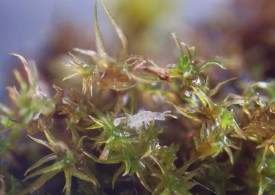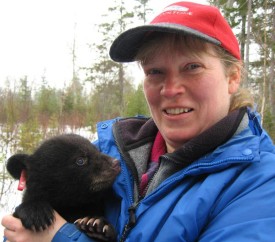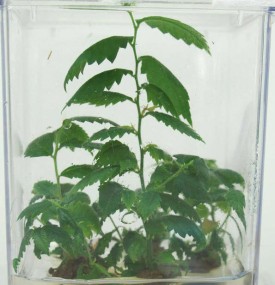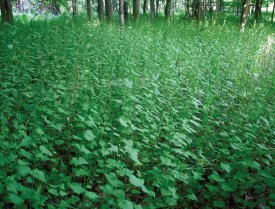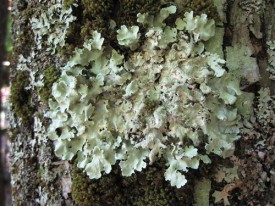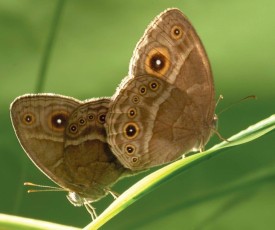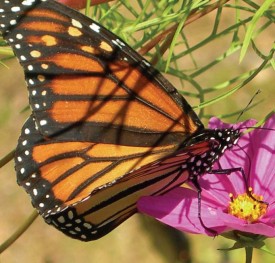A common species of moss (Ceratodon purpureus) that lives in weedy and forested habitats has been found to use an unusual strategy to reproduce: it produces a chemical scent to recruit tiny…
Discoveries
Bears Bone Up On Leptin
Skeletal tissues of living animals are constantly being renewed and replaced as wear and tear creates stresses and microfractures. In order to know how much bone needs replacing, the skeleton…
Acid Rain: Toil in the Soil
A new study led by a researcher at the U.S. Geological Survey suggests that there are early indications that soils are recovering – at least in red spruce forests – from the…
A Comeback Through Cloning
American elms were once a favorite tree in urban landscapes across America, prized for their elegant shape. When Dutch elm disease found its way to the United States in the 1930s, it slowly…
Pigeons Give Robots A Bird’s-eye View
Researchers from Harvard University and the Massachusetts Institute of Technology are attaching high-speed cameras to pigeons to gain insight into how the birds navigate through dense forests…
Low pH: What’s A Newt To Do?
A new study of eastern red-spotted newts, by a biologist at Bennington College in Vermont, suggests that these amphibians are able to adapt to dramatically different aquatic conditions.…
Like Moths to a Short Wavelength
Those interested in observing the night sky are often frustrated by the glow of population centers and street lights that makes it difficult to see all but the brightest stars. But stargazers…
When It Acid Rains, It Pours
Acid rain has long been known to acidify the calcium-poor soils in parts of the Northeast, resulting in declines in sugar maple and other important tree species. New research by ecologists at…
Pitcher Plants Offer Slippery Inspiration
When it rains, the cupped leaf of the pitcher plant becomes so slick that ants, spiders, and other prey attracted to its sweet aroma slide into the plant, where they drown and are dissolved…
Winners and Losers in a Maturing Forest
While Vermont’s forest and wetland bird species are generally doing well, a recent survey documented a significant decline of grassland and shrubland birds. The Vermont Breeding Bird…
Poplars Separated at Birth
Most gardeners are familiar with what has become known as “the nursery effect,” in which genetically identical plants acquired from different nurseries grow and respond to stress…
Outsider Disrupts Relationship
One of the most important relationships in the forest is between mycorrhizal fungi, a highly diverse group of soil microbes, and a wide variety of tree and understory plant species. The fungi…
The Wind and the Willows
While it is well known that wind causes trees to sway, University of Connecticut researcher Mark Rudnicki says that the movement of trees also affects the wind. “Wind gusts have a…
Migration and Infection
Global travel raises concerns among public health officials that a disease outbreak in one part of the world will quickly and easily spread elsewhere. The same is commonly believed to be true…
Lichens Break Down Prions
The chemical compounds in lichens have long been known to have antibiotic and antiviral properties. Pharmaceutical companies have been studying these properties for years. But recently,…
Seasonally Affected Dating Disorder
It appears that Sadie Hawkins Day has made its way into the butterfly world. Or, more likely, the sex role reversal when women ask men out for a date got its start with insects and only…
Trees: Now With Thirty Percent More Absorption!
While it has long been known that plants absorb carbon dioxide for use in photosynthesis, a new study has found that plants play a larger role than previously thought in absorbing certain…
Evolution in Small Spaces
When Mark Urban noticed that some vernal pools contained an abundance of certain salamanders but the same species was scarce or absent in other nearby pools, he wondered why. What the…
Where Have All the Pollinators Gone?
Pollinators make the world go ’round, but according to a recent report by the National Academy of Sciences, their populations are in rapid decline. Shrinking numbers of insects, bats,…
Lead Levels Settling Down
Lead that for decades accumulated in the duff layer of the forest floor in the Northeast is finally disappearing deep into the soil in low-elevation forests, though the process is taking a bit…


